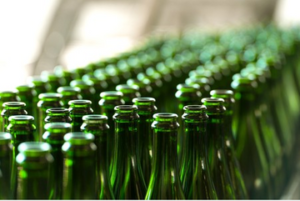

Even now, just look around yourself, and you will find plenty of stuff, including the screen that you are looking at right now. To make recycled glass products, the glass cullet, clear or colored is melted and molded into the desired glass products like bottles, jars, containers, etc.Glass can be found anywhere. Some of the most commonly used coloring agents for dyeing of recycled glass include:

For Clear Recycled Glass: Erbium oxide and Manganese oxide are added to the glass cullet to help clear all the colors from the glass cullet.For Brown or Amber-Colored Glass: Zinc oxide is added instead to oxidize the brown glass cullet to blue or green cullet, depending on the quantity of zinc oxide added and the richness of the brown or amber-colored glass being recycled.

The grey base is usually used as the primary color to which various other coloring dyes or agents are added to develop glass of various colors. A chemical known as manganese oxide is then mixed with the glass cullet to it grey. For Green Glass: The oxidation process turns the deep dark green color to yellow-green color.The de-colorizing process involves oxidizing the melted glass cullet. Therefore, to produce recycled glass of the desired color, the glass cullet needs to undergo glass de-colorizing in the glass recycle process, followed by dyeing. Glass cullet does not necessarily match the desired color for the end product. Ceramic contaminants in glass can lead to structural defects. If, however, ceramic contaminants do pass through the various screens together with the glass cullet, the quality of the recycled glass will be affected. Ceramic contaminants are removed via sieving where finely ground glass cullet is made to pass through various screens.Paper and plastic contaminants are picked up manually or through an automated process.Metallic contaminates are passed through a magnet.In order to recycle glass properly, it is imperative to get rid of these contaminants.ĭifferent contaminants can be processed in the following manner: If contaminants are allowed to remain in the glass cullet, the quality of recycled glass can be affected like having structural defects. Cullets can formed of different sizes depending on the requirements.Īll types of waste including glass waste (or in this case cullets) are riddled with different types of contaminants. Once the waste glass is sorted, it is then turned into tiny pieces also known as ‘cullets’ by means of crushing and grinding. Upon collecting glass waste, it is transported to the nearest sorting facilities for further processing.ĭifferent types of glasses are prepared by the addition of different chemicals and slight variation in manufacturing processes.īecause of this, glass waste is sorted based on its color to increase recycling efficiency. These are collected using a country-wide network which includes: With some material related variations, glass recycling process has the following steps:ĭifferent types of glass items end up in waste piles and recycle bins after serving their purpose or breaking. Glass is almost 100% recyclable and can be recycled endlessly without loss in quality or purity. Because glass does not decompose, it is important to recycle it.


 0 kommentar(er)
0 kommentar(er)
